Welcome to the Aquarium Plant Guide, your comprehensive resource for thriving aquatic flora. Explore the world of underwater plants, their benefits, and how to create a stunning ecosystem.
What Are Aquarium Plants?
Aquarium plants are living organisms adapted to thrive in water environments, adding beauty and functionality to aquariums. They come in diverse shapes, sizes, and colors, with varying growth habits. Popular species include crypts, anubias, and java moss, which are low-maintenance and ideal for beginners. These plants enhance aquarium aesthetics and contribute to water quality by absorbing waste nutrients. They are specifically cultivated for underwater life, making them a vital component of a balanced aquatic ecosystem. Understanding their needs and care ensures their longevity and health in your tank.
Benefits of Aquarium Plants
Aquarium plants enhance water quality by absorbing waste nutrients, improving clarity, and stabilizing the environment. They provide shelter and habitat for fish, reducing stress and promoting their well-being. Plants also contribute to a natural, visually appealing ecosystem, creating a serene underwater landscape. Additionally, they help maintain balanced water parameters by regulating oxygen and carbon dioxide levels. By integrating plants, aquariums become more sustainable and biologically diverse, fostering a thriving environment for both flora and fauna to coexist harmoniously.
Basic Requirements for Aquarium Plants
Aquarium plants require specific conditions to thrive. Lighting is crucial, with most species needing 10-12 hours of light daily. Water parameters, including pH, hardness, and temperature, must align with the plant’s natural habitat. Nutrient-rich substrates and balanced fertilization are essential for growth. Regular water changes and proper CO2 levels also contribute to a healthy environment. Meeting these fundamental needs ensures vibrant growth and a thriving aquatic ecosystem, supporting both plants and fish in harmony.
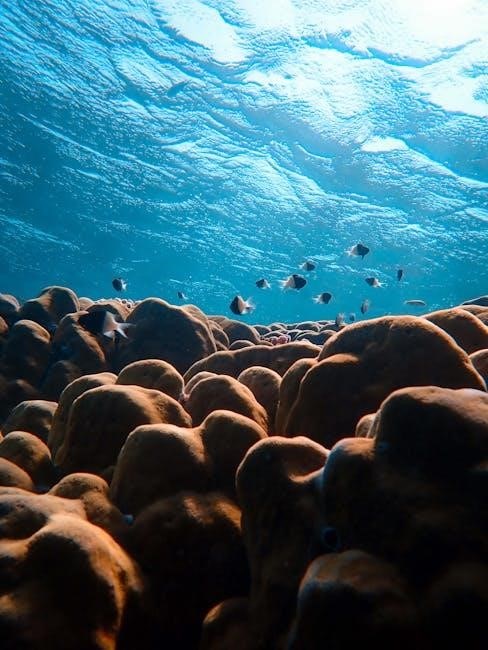
Choosing the Right Aquarium Plants
Selecting the right plants involves considering lighting, tank size, and fish compatibility. Opt for species that thrive in your aquarium’s specific conditions, ensuring a balanced ecosystem.
Popular Aquarium Plant Species
Popular aquarium plant species include Anacharis, known for its ease of growth and water-purifying abilities, and Java Moss, favored for its aesthetic carpeting. Amazon Swords, with their vibrant colors and tall growth, are ideal for larger tanks. Cryptocorynes offer variety in color, while Anubias thrives in low-light conditions. Vallisneria is perfect for background planting, growing tall for a natural look. Water Wisteria can be shaped creatively, and Hornwort adapts well to different lighting. Dwarf Hairgrass and Staurogyne Repens are sought after for lush carpets, and Ludwigia and Rotala add colorful accents. Each species brings unique benefits and beauty to aquariums, catering to various setups and preferences.
Factors to Consider When Selecting Plants
When selecting aquarium plants, consider lighting requirements, tank size, and growth rates. Ensure plants match your tank’s lighting intensity, as some thrive in low-light conditions while others need intense illumination. Tank size and plant growth habits are crucial to avoid overcrowding. Water parameters like pH, hardness, and temperature must align with your plants’ needs. Research species-specific requirements to ensure compatibility. Additionally, think about maintenance preferences, such as pruning needs and whether plants are carpeting, mid-ground, or background varieties. This helps create a balanced and visually appealing aquarium ecosystem.
Beginner-Friendly Aquarium Plants
For those new to aquarium plants, species like Anubias, Java Moss, and Cryptocorynes are ideal. These plants are hardy, low-maintenance, and thrive in various lighting conditions. Anubias is perfect for shaded areas, while Java Moss carpets the tank quickly. Crypts adapt well to different water parameters and require minimal care. Vallisneria and Wisteria are also great for beginners, as they grow steadily and stabilize the environment. These plants are forgiving, making them excellent choices for learning the basics of aquatic plant care and ensuring a healthy, balanced aquarium ecosystem.

Understanding Lighting for Aquarium Plants
Lighting is crucial for aquarium plants, affecting photosynthesis and growth. Low to moderate light plants like crypts and Anubias thrive in balanced setups, promoting healthy ecosystems naturally.
Types of Lighting for Aquariums
Aquarium lighting options include LED, T5, and T8 systems. LEDs are energy-efficient and customizable, ideal for plant growth. T5 lights provide consistent, bright illumination, while T8s are cost-effective but less intense. Proper lighting selection ensures healthy plant photosynthesis and enhances the aquarium’s visual appeal, catering to different plant species and aquarium sizes.
Lighting Requirements for Different Plants
Aquarium plants vary in lighting needs. Low-light plants like Anubias and Java Moss thrive under 10-20 PAR, while medium-light plants such as Cryptocorynes require 20-40 PAR. High-light species, like stem plants, need 40+ PAR. LED lights are ideal for adjustable settings, ensuring optimal growth. Proper lighting duration (8-10 hours) prevents algae growth and promotes healthy photosynthesis. Researching specific plant requirements ensures a balanced ecosystem, enhancing both plant health and aquarium aesthetics.
How to Avoid Overlighting
Overlighting can lead to algae growth and stress plants. Use timers to maintain 8-10 hours of light daily. Start with low-light plants and gradually increase intensity. Avoid direct sunlight and ensure proper water circulation. Monitor plant health and adjust lighting duration or intensity if algae appear. Regular water changes and balanced fertilization also help mitigate overlighting effects. Proper shading and plant placement can further prevent excessive light exposure, creating a healthier environment for your aquatic flora.
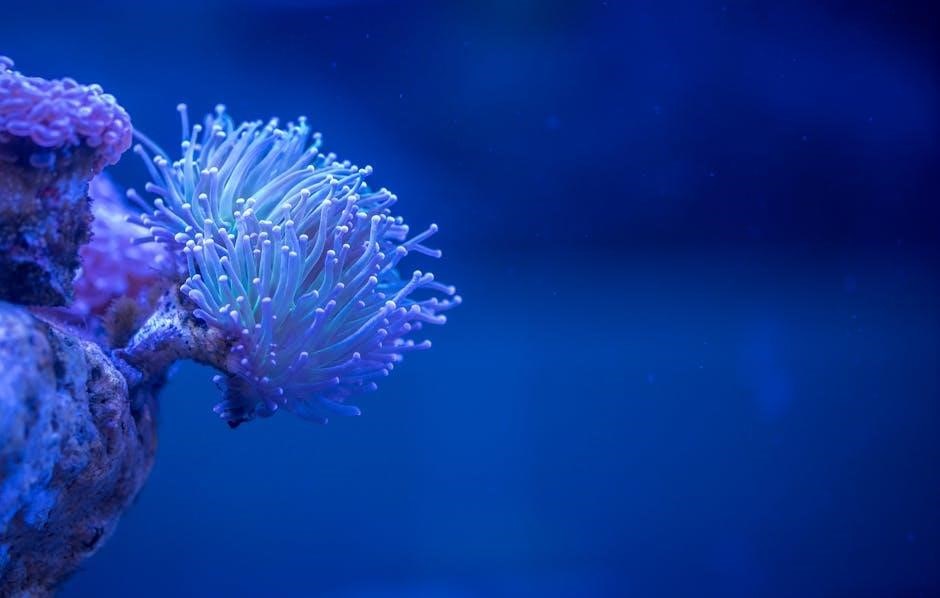
Water Parameters for Aquarium Plants
Water parameters like pH, hardness, and temperature are crucial for plant health. Each species has specific requirements, so monitoring and adjusting these factors ensures optimal growth and stability.
Understanding pH Levels
pH levels measure the acidity or alkalinity of water, ranging from 0 to 14, with 7 being neutral. Most aquarium plants thrive in slightly acidic to neutral conditions, typically between 6.5 and 7.5. Soft water species, like Anubias and Cryptocorynes, prefer lower pH levels, while hard water plants, such as Vallisneria, tolerate higher pH. Regular testing ensures stability, as sudden changes can stress plants. Maintaining the right pH balance is essential for nutrient absorption and overall plant health in your aquarium ecosystem.
Water Hardness and Its Impact
Water hardness refers to the concentration of minerals like calcium and magnesium in aquarium water, measured in degrees of general hardness (dGH) or carbonate hardness (dKH). Soft water (low dGH) suits plants like Anubias and Cryptocorynes, while hard water (high dGH) supports species like Vallisneria. Sudden changes in water hardness can stress plants, so maintaining stable conditions is crucial. Regular testing helps ensure compatibility with your plants’ needs, promoting healthy growth and preventing adverse reactions in the aquarium ecosystem.
Temperature Requirements
Aquarium plants have specific temperature needs, typically ranging between 72°F to 82°F (22°C to 28°C). Most species thrive in stable conditions, as sudden fluctuations can stress plants. Hardy plants like Anubias and Java Moss tolerate cooler temperatures, while others, such as Vallisneria, prefer warmer environments. Maintaining consistent temperatures ensures optimal growth and prevents plant decline. Regular monitoring with a reliable thermometer is essential to create a stable ecosystem for your aquatic plants to flourish.
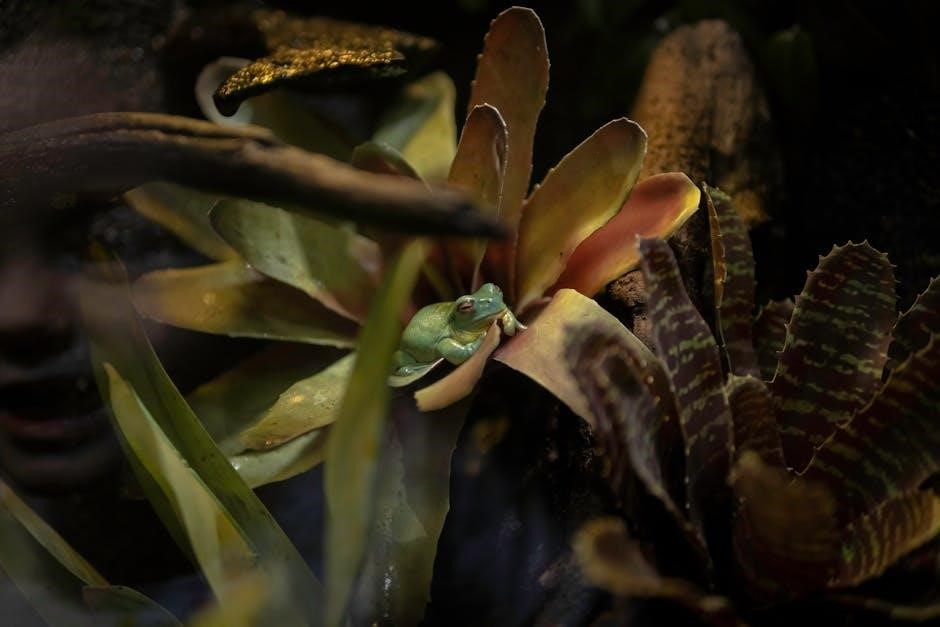
Fertilization for Aquarium Plants
Fertilization is essential for aquarium plants, providing necessary nutrients for growth and vibrant color. Balanced fertilizers ensure nutrient-rich environments, preventing deficiencies and promoting healthy plant development naturally.
Why Fertilization Is Important
Fertilization is crucial for aquarium plants as it provides essential nutrients necessary for growth, color, and health. Plants require macro and micro nutrients like nitrogen, phosphorus, and iron, which are often depleted in aquarium water. Without proper fertilization, plants may struggle to thrive, leading to stunted growth or discoloration. Regular fertilization ensures plants can photosynthesize efficiently, maintain vibrant hues, and support the aquarium’s biological balance. It helps create a nutrient-rich environment, fostering healthy plant development and a thriving aquatic ecosystem.
Natural vs. Artificial Fertilizers
Natural fertilizers, such as fish waste and plant debris, release nutrients slowly, promoting a balanced ecosystem. They support beneficial bacteria, enhancing nutrient cycling. Artificial fertilizers, like liquid or dry formulas, provide immediate nutrient availability, ideal for plants with high demands. While natural options are eco-friendly and sustainable, artificial ones offer precise control over nutrient levels. Choosing between them depends on plant needs, aquarium size, and desired maintenance level. Both can be effective, but combining them often yields the best results for thriving aquatic plants.
How to Monitor Fertilizer Levels
Monitoring fertilizer levels is crucial to prevent over-fertilization, which can harm plants and aquarium life. Regular water tests using nitrate, phosphate, and CO2 test kits help track nutrient levels. Observe plant health: vibrant growth indicates sufficient nutrients, while discoloration or stunted growth suggests imbalances. Adjust fertilizer doses based on test results and plant response. Perform partial water changes to remove excess nutrients; Maintaining a balanced ecosystem ensures optimal plant growth and aquarium health.

Maintenance and Care
Regular maintenance ensures aquarium plants thrive. Daily checks, pruning, and water changes prevent issues like algae growth. Consistent care promotes healthy growth and a balanced ecosystem.
Daily Maintenance Tips
Monitor water parameters daily to ensure stability. Check pH, ammonia, and nitrite levels to maintain a healthy environment. Trim or prune plants as needed to prevent overcrowding and promote growth. Replace 10-20% of the water weekly to remove waste products. Inspect equipment, like filters and lighting, to ensure proper function. Feed fish moderately to avoid excess nutrients. Regularly clean glass walls and decorations to improve visibility. Keep a journal to track changes and maintain consistency in care. These small efforts contribute to a thriving aquarium ecosystem.
Pruning and Trimming Plants
Regular pruning and trimming are essential for maintaining healthy aquarium plants. Use sharp scissors or clippers to remove dead or decaying leaves, which can harbor algae. Trim overgrown stems to encourage bushy growth and prevent shading of smaller plants. For carpeting plants like Monte Carlo, gently trim the surface to maintain an even layer. Prune roots if they outgrow the substrate. Dispose of cuttings to avoid decomposition. Proper trimming promotes better light penetration, airflow, and overall plant health, creating a balanced and visually appealing aquarium environment.
Regular Water Changes
Regular water changes are crucial for maintaining a healthy aquarium environment. Aim to replace 10-20% of the water weekly to remove waste and excess nutrients. This helps prevent algae growth and ensures optimal water clarity. Use a gravel vacuum to remove debris and siphon out decaying plant matter. Replace the water with properly treated, dechlorinated water that matches the aquarium’s temperature and pH. Consistent water changes promote strong plant growth, prevent nutrient imbalances, and keep your aquarium ecosystem thriving and stable over time.
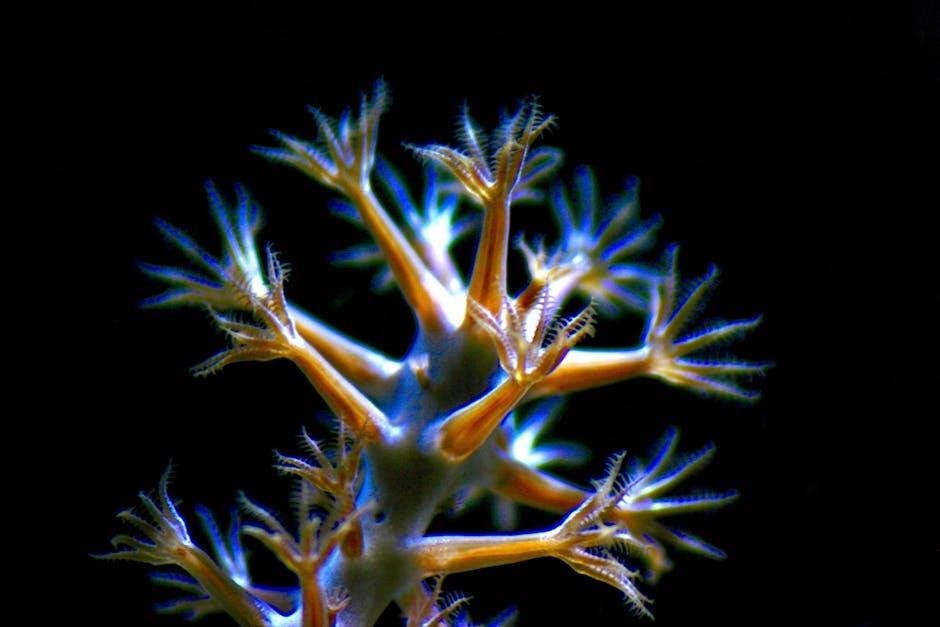
Common Mistakes to Avoid
Avoid overcrowding, inadequate lighting, and incorrect water parameters. Regular maintenance and proper research are key to preventing these issues and ensuring a thriving aquarium environment.
Overcrowding the Aquarium
Overcrowding is a common mistake that can harm both plants and fish. It leads to insufficient oxygen, increased waste, and stress on aquatic life. Always research plant growth rates and ensure adequate space for expansion. Using online calculators can help determine the right number of plants for your tank size. Avoid overstocking to maintain healthy water parameters and prevent algae growth. Proper planning ensures a balanced ecosystem where plants and fish thrive together without competition for resources.
Inadequate Lighting
Inadequate lighting is a common issue that can stunt plant growth and lead to weak, discolored leaves. Most aquatic plants require specific light intensity and duration to photosynthesize effectively. Low-light plants like crypts, wisteria, and anubias are ideal for beginners with limited lighting setups. Ensure your aquarium has a balanced lighting system to support plant health without promoting algae growth. Research the lighting needs of your plants to create an optimal environment for thriving aquatic life.
Incorrect Water Parameters
Incorrect water parameters, such as pH, water hardness, and temperature, can severely impact plant health. Plants thrive in specific ranges, and deviations can lead to nutrient deficiencies or poor growth. Soft water plants prefer lower pH and hardness, while hard water plants tolerate higher levels. Regular water testing ensures stability, preventing sudden changes that can stress plants. Maintain consistent parameters suited to your plant species to promote healthy growth and avoid complications. This balance is crucial for creating a thriving aquatic ecosystem.

Troubleshooting Common Issues
Identify and address plant diseases, algae growth, and nutrient deficiencies promptly. Regular monitoring and adjustments ensure a balanced ecosystem, keeping your aquatic plants healthy and thriving.
Identifying and Treating Plant Diseases
Aquatic plants can be susceptible to diseases caused by poor water conditions, overcrowding, or pests. Early detection is crucial—look for discoloration, holes, or unusual growth. Isolate infected plants immediately to prevent spread. Treat with specific aquarium plant medications, and improve water quality through regular changes. Maintain proper lighting and nutrient balance to strengthen plant health. Quarantine new plants before introducing them to the main tank. Consistent maintenance and a stable environment are key to preventing and managing plant diseases effectively.
Dealing with Algae Growth
Algae growth is a common challenge in aquariums, often caused by excess nutrients, unstable water parameters, or overlighting. To combat algae, introduce algae-eating organisms like snails or shrimp. Regularly test water quality and maintain stable conditions. Avoid over-fertilizing and ensure proper CO2 levels for plant health. Perform daily water changes to reduce nutrient buildup. Use a balanced lighting schedule, and consider adding shade-providing plants. A well-maintained ecosystem with thriving plants naturally suppresses algae growth, creating a healthier environment for both plants and fish.
Addressing Nutrient Deficiencies
Nutrient deficiencies can hinder plant growth, causing yellowing leaves or stunted development. Regular water changes help maintain balanced nutrient levels. Use a balanced fertilizer tailored to your plants’ needs, ensuring adequate nitrogen, phosphorus, and potassium. Monitor nutrient levels to avoid over-fertilizing, which can harm plants. Introduce CO2 injection for enhanced nutrient absorption. Provide consistent lighting and water circulation to promote healthy growth. Addressing deficiencies early prevents long-term damage and supports a thriving aquatic ecosystem.

Aquascaping and Design
Aquascaping transforms aquariums into stunning underwater landscapes, combining plants, hardscape, and creativity. It enhances aesthetics, creating natural habitats for fish and a visually appealing environment for enthusiasts.
Basic Principles of Aquascaping
Aquascaping begins with planning and balance, ensuring harmony between plants, hardscape, and open space. Use the rule of thirds to create visually appealing layouts. Select plants that complement the aquarium’s size and lighting. Incorporate rocks, driftwood, or other decorative elements to add depth and texture. Maintain symmetry or asymmetry intentionally to guide the viewer’s eye. Proper lighting enhances the natural beauty of the design, while regular pruning keeps plants healthy and the layout refined. These principles help create a serene, natural underwater environment for fish and plants to thrive.
Creating a Balanced Aquarium Layout
A balanced aquarium layout blends plants, hardscape, and open swimming areas harmoniously. Use the rule of thirds to place focal points, guiding the eye naturally. Layer plants by size and texture, with tall species at the back and shorter ones in the foreground. Incorporate decorative elements like rocks or driftwood to add depth. Maintain symmetry or asymmetry intentionally for visual appeal. Ensure negative space to avoid overcrowding, allowing fish to move freely. This balance creates a natural, visually pleasing ecosystem where plants and fish thrive together in harmony.
Using Plants for Hardscaping
Plants can be strategically used to enhance hardscaping elements like rocks and driftwood. Tall plants such as Amazon swords or Vallisneria create vertical accents, while carpeting plants like Monte Carlo or Marsilea soften the edges of hardscape features. Mid-ground plants with unique textures add depth and visual interest. By blending plants with structural elements, you create a cohesive design where flora and hardscape complement each other, enhancing the aquarium’s natural aesthetic and providing hiding places for fish. This approach balances beauty and functionality seamlessly.
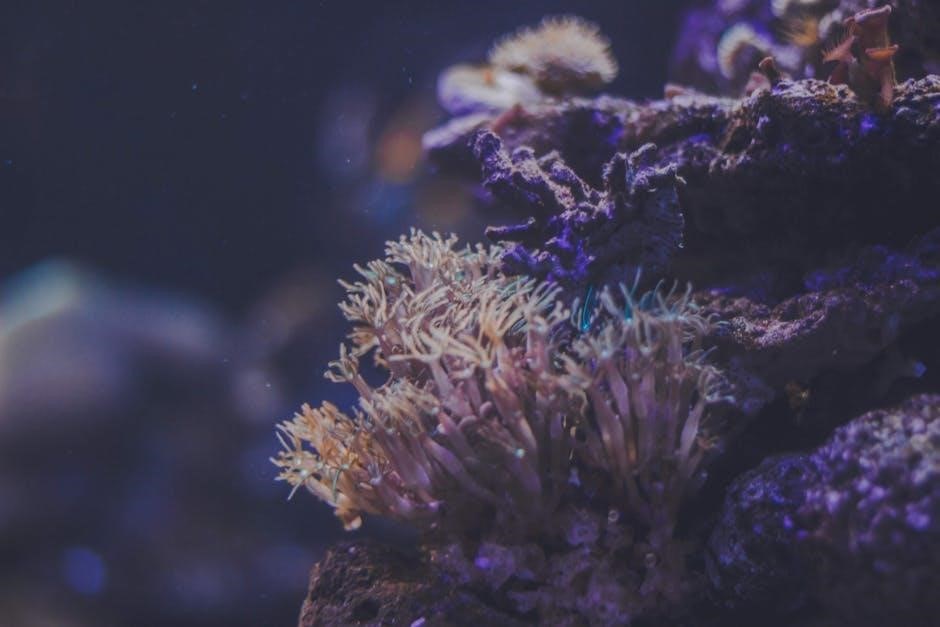
Advanced Techniques
Advanced techniques involve precision methods like CO2 injection, specialized fertilization, and creating intricate ecosystems. These practices enhance growth, color, and plant health for experienced aquarists seeking perfection.
Using CO2 Injection
CO2 injection is a powerful tool for enhancing aquatic plant growth. By increasing CO2 levels, plants can undergo photosynthesis more efficiently, leading to faster growth and vibrant colors. Proper dosage is key, as excessive CO2 can harm fish. Start with a low flow rate and monitor plant response. Regular maintenance of CO2 equipment is essential to ensure consistency. Combining CO2 with adequate lighting and fertilization creates optimal conditions for thriving plants. Always research recommended levels for your specific aquarium setup to avoid over-supplementation.
Advanced Fertilization Methods
Advanced fertilization involves precise nutrient delivery, optimizing plant growth without overloading the aquarium. Use high-quality, balanced fertilizers tailored to plant needs, and consider automated dosing systems for consistency. Monitor nutrient levels regularly and adjust dosages based on water test results. Employing a nutrient-rich substrate can complement liquid fertilizers, while maintaining proper water flow ensures even distribution. Regular water changes help prevent nutrient buildup, promoting a healthy ecosystem for aquatic plants to thrive in.
Creating a Natural Ecosystem
Creating a natural ecosystem in your aquarium involves replicating the balance found in nature. Choose plants and decorations that mimic natural habitats, ensuring a diverse environment for both plants and fish. Maintain proper water circulation and filtration to support biological balance. Regular water changes and monitoring of water parameters are essential to sustain a thriving ecosystem. By fostering a natural environment, you encourage healthy plant growth and a stable aquatic community, creating a self-sustaining system that benefits all aquatic life.
Welcome to the conclusion of our Aquarium Plant Guide. Aquarium plants enhance beauty, improve water quality, and create a natural habitat for fish. Happy planting and learning!
Final Tips for Success
Research and plan carefully before adding plants to your aquarium. Choose species that match your tank’s conditions and maintenance level. Regular water changes and monitoring of water parameters are essential. Provide balanced lighting to avoid algae growth. Be patient, as aquatic plants take time to thrive. Keep your aquarium clean and stable for optimal growth. Lastly, stay informed and seek advice from experienced aquarists to ensure long-term success with your aquarium plants.
Encouragement for Further Learning
Continue exploring the fascinating world of aquarium plants by experimenting with new species and techniques. Stay updated with trends in aquascaping and plant care through online forums and communities. Engage with local aquarium clubs to share experiences and gain insights. Remember, learning is a lifelong journey, and every discovery enhances your ability to create thriving aquatic ecosystems. Embrace challenges and enjoy the rewarding process of nurturing your underwater world.
Final Thoughts on Aquarium Plants
Aquarium plants bring life, beauty, and balance to underwater environments. By enhancing water quality and providing habitats for fish, they create a thriving ecosystem. With proper care, including adequate lighting and balanced water parameters, plants flourish and transform tanks into stunning natural displays. Embrace the journey of learning and adapting to their needs, as each plant contributes uniquely to the aquarium’s harmony. Remember, nurturing aquatic plants is a rewarding hobby that combines art and science, offering endless opportunities for growth and creativity.


